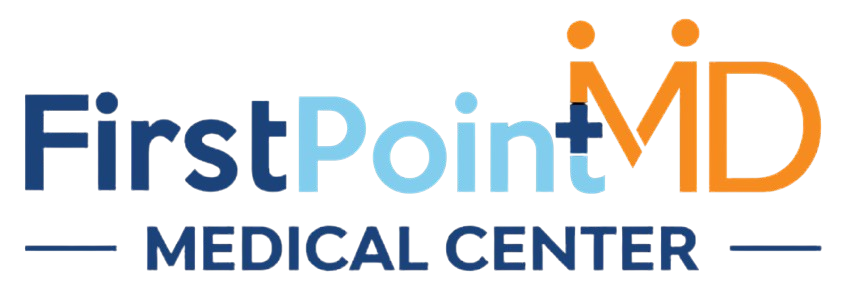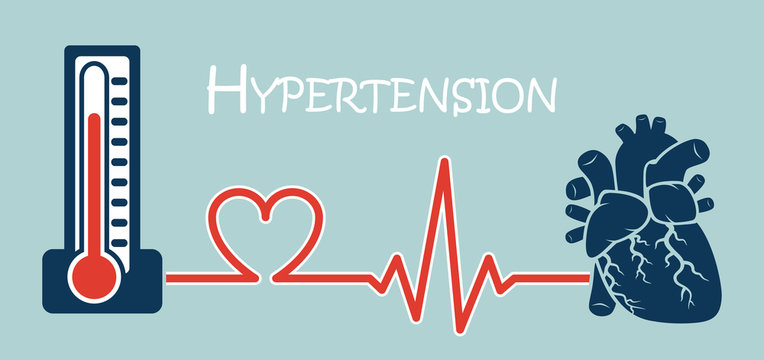Hypertension, commonly known as high blood pressure, is one of the most widespread yet preventable health conditions worldwide. Often referred to as the “silent killer,” it can lead to serious complications like heart disease, stroke, and kidney failure if left untreated. While individual lifestyle changes and medical treatments play vital roles in managing hypertension, public health campaigns have emerged as powerful tools in reducing its prevalence on a population scale.
At First Point MD, we recognize that effective public health initiatives not only raise awareness but also empower communities to make lasting, healthy lifestyle choices. This article explores how targeted public health campaigns are helping lower hypertension rates globally, what strategies have proven most effective, and why community engagement remains at the heart of sustainable change.
Understanding Hypertension: A Global Health Challenge
What Is Hypertension?
Hypertension occurs when the force of blood against the artery walls remains consistently high. It’s typically defined as a blood pressure reading of 130/80 mmHg or higher.
There are two main types:
-
Primary (essential) hypertension: Develops gradually over time due to genetics, aging, and lifestyle factors.
-
Secondary hypertension: Results from an underlying condition, such as kidney disease or hormonal disorders.
Why It Matters
Globally, an estimated 1.28 billion adults aged 30–79 suffer from hypertension, according to the World Health Organization (WHO). Alarmingly, nearly 46% of those individuals are unaware they have it.
Hypertension is a leading cause of premature death, responsible for more than 10 million deaths annually. Yet, with the right interventions—particularly through public education and preventive healthcare—many cases can be avoided.
The Importance of Public Health Campaigns
Public health campaigns are structured efforts aimed at educating the public, promoting healthy behaviors, and improving access to care. In the case of hypertension, these initiatives play a critical role in:
-
Raising awareness about the risks of high blood pressure
-
Encouraging screening and early detection
-
Promoting lifestyle modifications like healthy eating and exercise
-
Reducing social and environmental factors that contribute to hypertension
At First Point MD, we emphasize that awareness is only the first step—sustained behavioral change and accessible healthcare are what truly reduce disease burden.
Raising Awareness: Turning Knowledge Into Action
The Power of Education
The foundation of every successful public health campaign lies in education. By helping people understand what hypertension is, why it matters, and how to prevent it, awareness campaigns empower individuals to take control of their health.
For example:
-
WHO’s “HEARTS” initiative focuses on hypertension management and prevention through education in low- and middle-income countries.
-
The American Heart Association’s “Check. Change. Control.” program encourages individuals to monitor their blood pressure at home.
Through community workshops, health fairs, digital outreach, and social media, these programs demystify blood pressure readings and highlight practical ways to manage health—such as reducing salt intake or maintaining a balanced diet.
Bridging the Knowledge Gap
Public awareness campaigns also aim to close the information gap between populations with varying education levels. In underserved communities, misconceptions about blood pressure and limited healthcare access can delay diagnosis. Educational outreach helps people recognize early symptoms and seek timely care.
Encouraging Regular Screening and Early Detection
The Screening Challenge
One of the biggest barriers in hypertension control is underdiagnosis. Since the condition often has no noticeable symptoms, many people go years without knowing their blood pressure is elevated.
Public health campaigns promote community-based screenings in accessible locations—shopping malls, schools, pharmacies, and workplaces—so individuals can get tested without needing a hospital visit.
Impactful Screening Initiatives
-
World Hypertension Day, observed annually on May 17, emphasizes free screening and public education events globally.
-
Local campaigns, such as “Know Your Numbers,” encourage routine self-monitoring and regular physician visits.
By normalizing screening as part of everyday life, these initiatives have significantly improved early detection rates.
At First Point MD, we advocate regular blood pressure monitoring during primary care visits, especially for adults over 30 or those with risk factors such as obesity, diabetes, or smoking.
Promoting Healthy Lifestyles: A Cornerstone of Prevention
Dietary Awareness Campaigns
Public health campaigns often focus on nutrition education—a cornerstone in hypertension prevention. High sodium intake, processed foods, and low fruit and vegetable consumption are leading contributors to elevated blood pressure.
Notable examples include:
-
The “Salt Smart” campaign in the U.K., which successfully reduced population sodium intake through food labeling and reformulation.
-
The DASH (Dietary Approaches to Stop Hypertension) diet promotion, which emphasizes whole grains, lean proteins, and reduced sodium.
These campaigns use media outreach, school education, and restaurant partnerships to make healthy eating more accessible and appealing.
Encouraging Physical Activity
Regular exercise helps maintain heart health and blood pressure. Campaigns like “Move for Health” or “Let’s Move!” encourage daily activity, from walking to community fitness challenges.
At First Point MD, we educate patients that even 30 minutes of moderate activity—like brisk walking or cycling—five days a week can drastically improve cardiovascular health.
Addressing Social Determinants of Health
Public health campaigns increasingly recognize that hypertension is not just a medical issue—it’s a social and environmental one. Factors such as income, education, neighborhood safety, and access to healthy foods play a significant role in shaping lifestyle choices.
Community-Based Solutions
Campaigns that target these determinants work to:
-
Improve access to affordable produce through urban gardens or farmers’ markets
-
Advocate for clean, safe parks for physical activity
-
Collaborate with policymakers to limit trans fats and reduce sodium in processed foods
By addressing systemic barriers, these efforts help entire communities adopt healthier habits.
The Role of Technology and Digital Health Campaigns
The digital age has transformed how public health messages are delivered. Mobile apps, social media campaigns, and wearable devices are now integral to hypertension awareness and management.
Examples of Digital Campaign Success
-
Blood pressure tracking apps remind users to check their readings regularly.
-
Online educational platforms host webinars and share infographics on hypertension prevention.
-
Social media challenges, such as fitness or healthy cooking contests, motivate individuals to take part in healthier behaviors collectively.
At First Point MD, we encourage patients to leverage technology for self-care—tracking diet, exercise, and blood pressure trends through user-friendly platforms that make healthy living more attainable.
Empowering Healthcare Providers and Policymakers
Public health campaigns don’t stop at educating the public—they also aim to equip healthcare professionals and influence policy.
Training and Guidelines for Providers
Programs like WHO’s HEARTS technical package provide standardized hypertension treatment protocols, ensuring consistency across clinics and improving patient outcomes.
At First Point MD, our team stays aligned with these international best practices to deliver effective, evidence-based hypertension management.
Policy and Advocacy
Governments play a pivotal role by:
-
Mandating clear food labeling for sodium and fat content
-
Implementing public smoking bans and promoting smoke-free environments
-
Subsidizing preventive healthcare services such as free blood pressure screenings
By integrating public policy with health education, nations can foster healthier societies and reduce the burden of hypertension.
Evaluating the Success of Public Health Campaigns
Metrics That Matter
The success of a hypertension reduction campaign is measured by:
-
Increased awareness levels among the target population
-
Higher screening and diagnosis rates
-
Improved control rates through lifestyle and medication adherence
-
Reduced hospitalizations and mortality from cardiovascular events
For instance, after implementing salt reduction campaigns, countries like Finland and Japan saw significant declines in average blood pressure and stroke mortality rates.
Continuous Improvement
Effective campaigns are continuously evaluated and adapted based on feedback, ensuring that messages remain relevant and impactful. Community partnerships and patient testimonials often serve as valuable indicators of long-term success.
First Point MD’s Commitment to Hypertension Prevention
At First Point MD, we believe that combating hypertension requires a comprehensive and collaborative approach. Our mission is to:
-
Promote preventive health education across communities
-
Provide routine blood pressure screenings in clinical and community settings
-
Support patients through personalized lifestyle guidance and medical management
-
Collaborate with public health organizations to extend outreach efforts
By integrating individual care with population health initiatives, we help bridge the gap between awareness and action—one patient at a time.
The Future of Hypertension Prevention
As global health priorities evolve, future public health campaigns will rely even more on:
-
Data-driven approaches to identify high-risk populations
-
Culturally tailored health messages for diverse communities
-
Integration of artificial intelligence and wearable technology to monitor health trends
-
Cross-sector collaboration between healthcare, education, and government institutions
These innovations hold the potential to make hypertension prevention not just a goal, but a global standard.
Conclusion: Empowering Communities to Beat Hypertension
Reducing hypertension rates is not a challenge for healthcare providers alone—it’s a shared responsibility among individuals, communities, and governments. Public health campaigns play an irreplaceable role in this mission by spreading knowledge, promoting early detection, and encouraging sustainable lifestyle changes.
At First Point MD, we are proud to support the vision of a healthier, heart-strong future through ongoing education, preventive care, and active community engagement.
By transforming awareness into action, we can collectively make hypertension a preventable condition—not an inevitable one.


